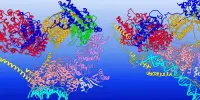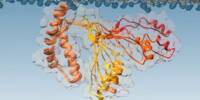Nature’s complex dance frequently takes place in ways that are mysterious and imperceptible to the unaided sight. The keystone of this mysterious dance is a symbiotic relationship between plants and a class of fungi called arbuscular mycorrhizal (AM) fungi. This collaboration is explored in new, ground-breaking research that was just published in the journal Science. The findings provide important new information that broadens our knowledge of plant-AM fungus interactions and may help develop sustainable agriculture.
AM fungus develop a special partnership with their plant hosts by living inside plant root cells. This relationship is more than just coexisting; it entails a crucial and intricate flow of nutrients that is both very advantageous for the plant and necessary for the fungus to survive.
Researchers at the Boyce Thompson Institute (BTI) have uncovered the roles of two proteins, CKL1 and CKL2, which are active only in the root cells containing the AM fungi. These two proteins belong to a larger family of proteins known as CKLs, whose functions in the plant have yet to be fully understood.
Lipids are costly for the plant, so dual regulatory mechanisms may ensure that lipid provisioning is tightly controlled, perhaps as a safeguard against exploitation by fungal pathogens.
Dr. Maria Harrison
“The closest relatives of the CKL family are proteins, called CDKs, that control the plant cell cycle and are located in the nucleus of the cell. Surprisingly, the CKL1 and CKL2 proteins have evolved a different role than CDKs — they do not control the cell cycle. They are tethered to the membranes of the root cell, including a membrane that surrounds the fungus,” said Dr. Sergey Ivanov, a post-doctoral researcher at BTI and first author of the study.
The researchers discovered that these CKL proteins are essential for the fungi’s survival within plant roots. They perform an important function in managing the flow of lipids (fats) from the plant to the fungi, a process required for the fungi to survive. Without these proteins, essential genes that control lipid transport do not function, starving the fungal.
The study also discovered a complicated network of interactions involving many receptor kinase proteins. One of these kinases is responsible for permitting the AM fungus to penetrate the root’s outer coat. The researchers observed that this identical kinase plays a novel role deeper into the root, where it collaborates with CKL proteins, likely initiating the flow of lipids to the fungus.

Surprisingly, while CKL proteins are vital for controlling lipid flow, they don’t manage the entire symbiotic lipid pathway. Instead, they control genes responsible for the start and end of this pathway. Meanwhile, a key protein operating in the middle of this pathway, RAM2, is activated by a different regulator, RAM1. For full-scale lipid production to occur, both the CKL and RAM1 pathways must be active.
“Lipids are costly for the plant, so dual regulatory mechanisms may ensure that lipid provisioning is tightly controlled, perhaps as a safeguard against exploitation by fungal pathogens,” said Dr. Maria Harrison, a professor at BTI and senior author of the work.
He went on to say, “In an agricultural context, leveraging this natural symbiosis could lead to crops that are more efficient in nutrient uptake and more resilient to environmental stressors.”
This discovery not only advances our understanding of the molecular dynamics of plant-AM fungus symbiosis, but it also reveals the myriad and frequently hidden links that keep life on our planet going. It reminds us of nature’s immense complexity and interconnection, much of which is concealed right beneath our feet.
















